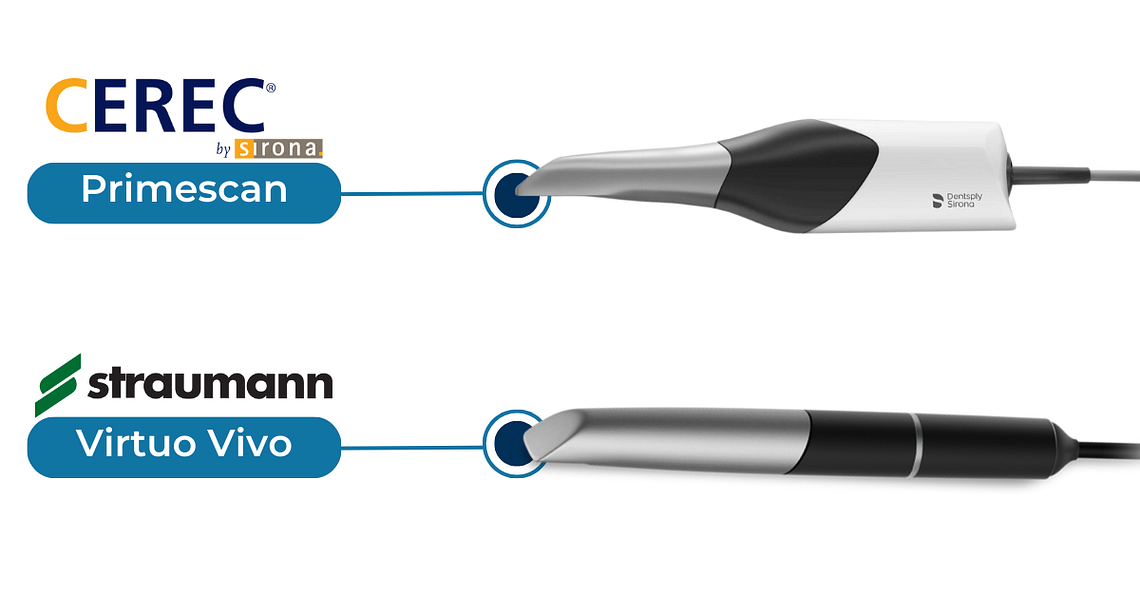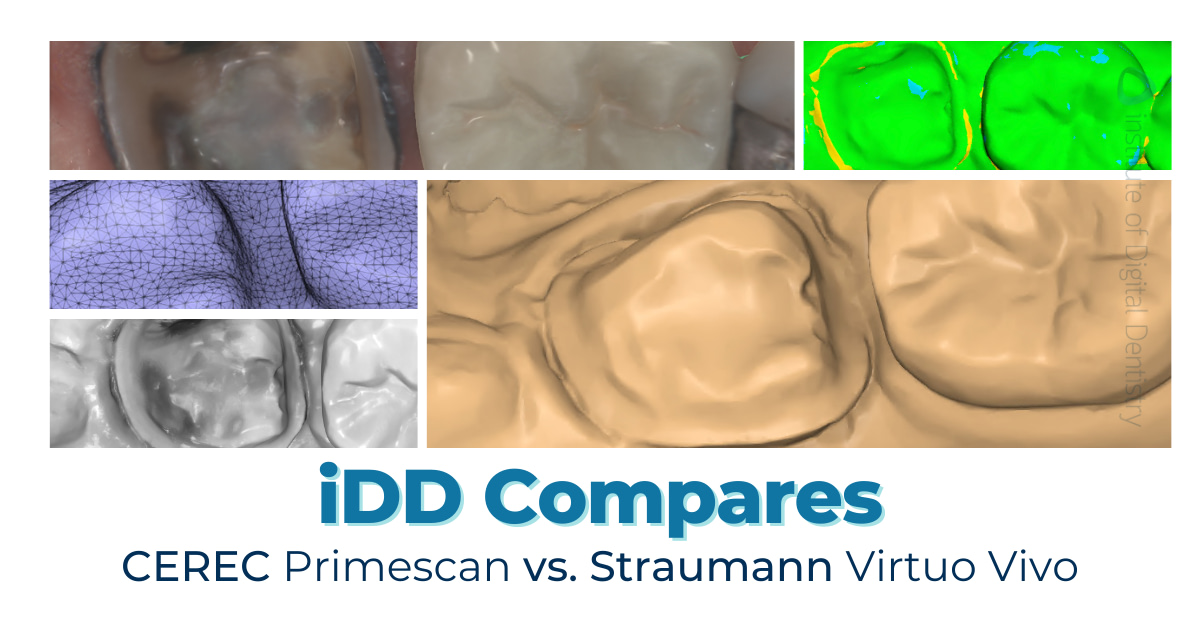Ever since the Virtuo Vivo released in 2019, it didn’t exactly garner a lot of positive reviews. With iDD’s visit to International Dental Show 2023 earlier this year in Cologne, Germany, Straumann have been on a mission to massively improve the scanner - in fact, it actually won most improved at our Intraoral Scanner Awards.
Dentsply Sirona’s CEREC Primescan, on the otherhand, is commonly dubbed the gold standard of intraoral scanners (IOS) throughout the dental community, with it being one of the most accurate on the market.
iDD is fortunate to have access to a wide selection of IOS, where we are able to objectively test and review IOS with the goal to help other dental professionals form their own opinion.
Dr. Ahmad Al-Hassiny scanned his patient, 37 crown, on the same day with the following IOS: CEREC Primescan by Dentsply Sirona and Virtuo Vivo by Straumann.

Scans in their Native Software
Each scanner captures color slightly differently depending on how accurately the scanner is able to pick up the light bouncing back off the prep and adjacent teeth.
Every intraoral scanner available comes with its native scanning software. Using AI, they often filter out scan irregularities such as movable soft tissues, cheeks, and tongue.
We can explore how these scanners capture color using their native software. The way each scanner captures color varies, mainly depending on the scanner's precision in interpreting light reflection from the prepared area and surrounding teeth.

The processed color scans of the same tooth preparation were captured using two different scanners, as previewed in their native software.
As we can see from the image above, when we compare the brightness between the captured intraoral scans from the Primescan and Virtuo Vivo, Primescan is much brighter and saturated than the Virtuo Vivo.
Monochromatic scans can also be taken and previewed in their native software. These scans provide a better view of the quality of the prep and is recommended to check for any scan issues that would not be as obvious when viewed in color.

The processed monochrome scans of the same tooth preparation were captured using two different scanners, as previewed in their native software.
It is interesting to note that the CEREC Primescan monochromatic scan displays more detail than the monochromatic scan of the Virtuo Vivo.
Exported Scans in Third-Party Software
Most intraoral scanners consist of an open architecture to allow for scans to be exported and sent to labs. These scans are usually exported in three various formats - STL, PLY or OBJ files.
Both IOS devices, CEREC Primescan and Virtuo Vivo, are only capable of exporting scans in an STL file format. Primescan exports an STL file with a size capacity of 23.5 MB, whereas the Virtuo Vivo exports its STL file at almost ¼ of the size at 7.5 MB.
STL files export as monochromatic scans whereas OBJ and PLY files store color and texture. Not all intraoral scanners are able to export OBJ and/or PLY files, such as CEREC Primescan and Virtuo Vivo, whereas STL files are widely used across the market as a default setting which is the case for these two IOS.

All scans were exported in an STL format and previewed in the Medit Design app.
Labs use third-party CAD software's (in our comparison’s case we used Medit Design) to preview the received STL, PLY or OBJ files and create restorations based on these scans. By exporting the scans outside their native software, we are able to view the scans objectively without the customised color and optimised surface rendering of the individual scanner’s built-in software.
Below you can also see the exported STL files in a third-party software, Medit Design by Medit, with its tessellated mesh.

Tessellated meshes of Primescan and Virtuo Vivo scan as previewed in the Medit Design app.
The tessellated mesh produced by the CEREC Primescan is much more dense than the tessellated mesh produced by the Virtuo Vivo. This supports the larger STL file size that the Primescan exports, as there is more data or “tessellated triangles” within the mesh to export with 23.5 MB in contrast to the smaller STL fize of the Virtuo Vivo scan of 7.5 MB, hence the lesser “tessellated triangles.”
Scan Accuracy
Using Medit Design, we took a closer look at the amount and detail of data captured within each scan.
Prep margin lines can also be reviewed using third-party software. Current intraoral IOS devices project a light source onto the surfaces to be scanned. For an accurate scan, it's crucial that this light is reflected to the IOS from the scanned surface. If, instead, the light penetrates the surface and does not bounce back, it results in inaccurate scans. The margin line is more prominent and visible with the intraoral scan taken using the CEREC Primescan in comparison to the scan taken using the Virtuo Vivo.

Prep margin of each scan as previewed in the Medit Design app.
As previously mentioned in the introduction, CEREC Primescan is known to capture accurate scans. For this reason, we used Primescan as our point of reference.
We can view the deviations of the Primescan scan to the Virtuo Vivo scan, when aligned using Medit Design’s Deviation Display mode. Based off the colored deviation key, we can see that the scan meshes are -0.050 to +0.050 mm deviation in comparison to the scan taken with the Virtuo Vivo.

Deviation map of the CEREC Primescan scan as our point of reference when compared to the Virtuo Vivo scan and sectional view.
There seems to be minimal deviation around the prep area. This is also supported by the cross-section of the scans, in which we can see that there is minimal difference between the aligned scan data.
Conclusion
While minor variations exist between Dentsply Sirona’s CEREC Primescan and Straumann’s Virtuo Vivo intraoral scanners, either within their native software or third-party applications, no substantial deviation exists between the scans.
We hope posts like this helps answer some of the questions you may have and helps you to make a more informed purchase.
Which IOS or type of cases would you like to see next?

